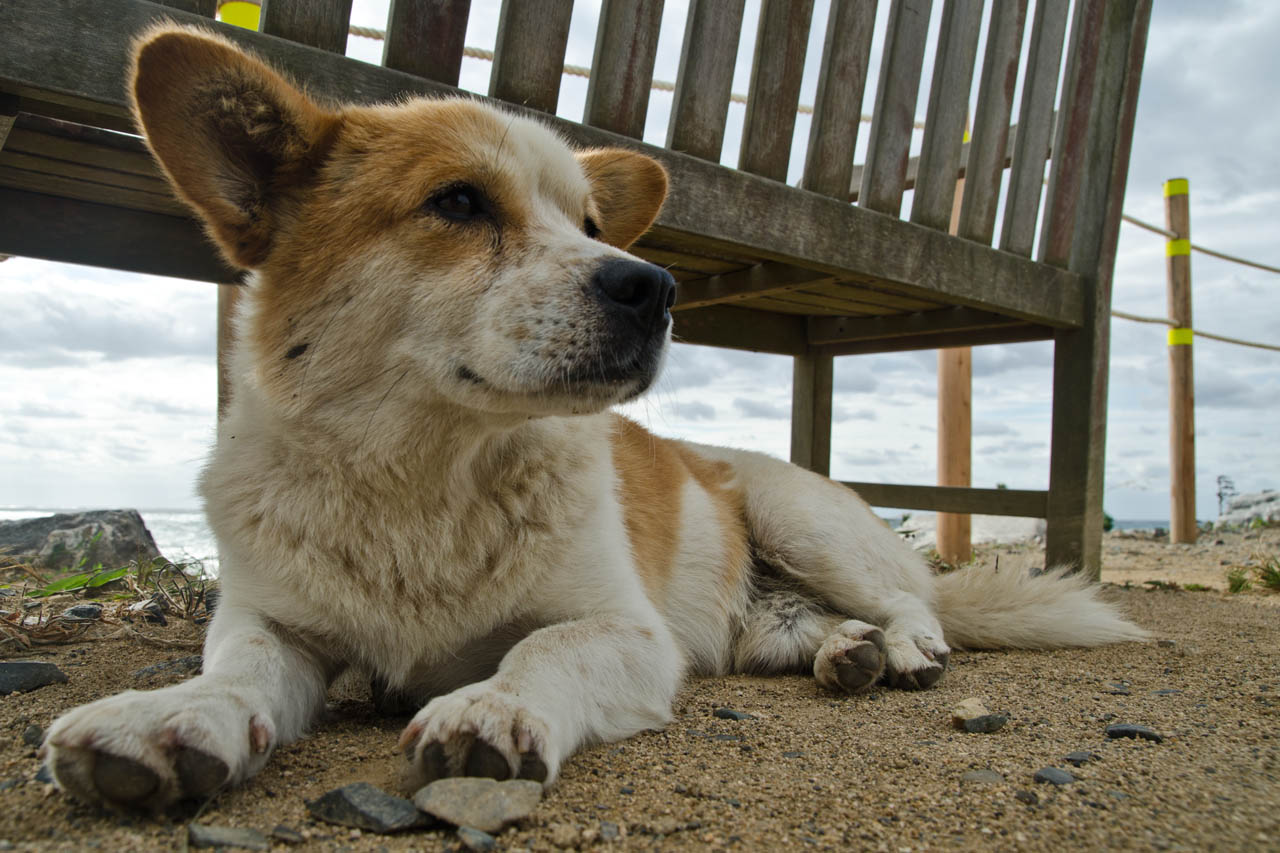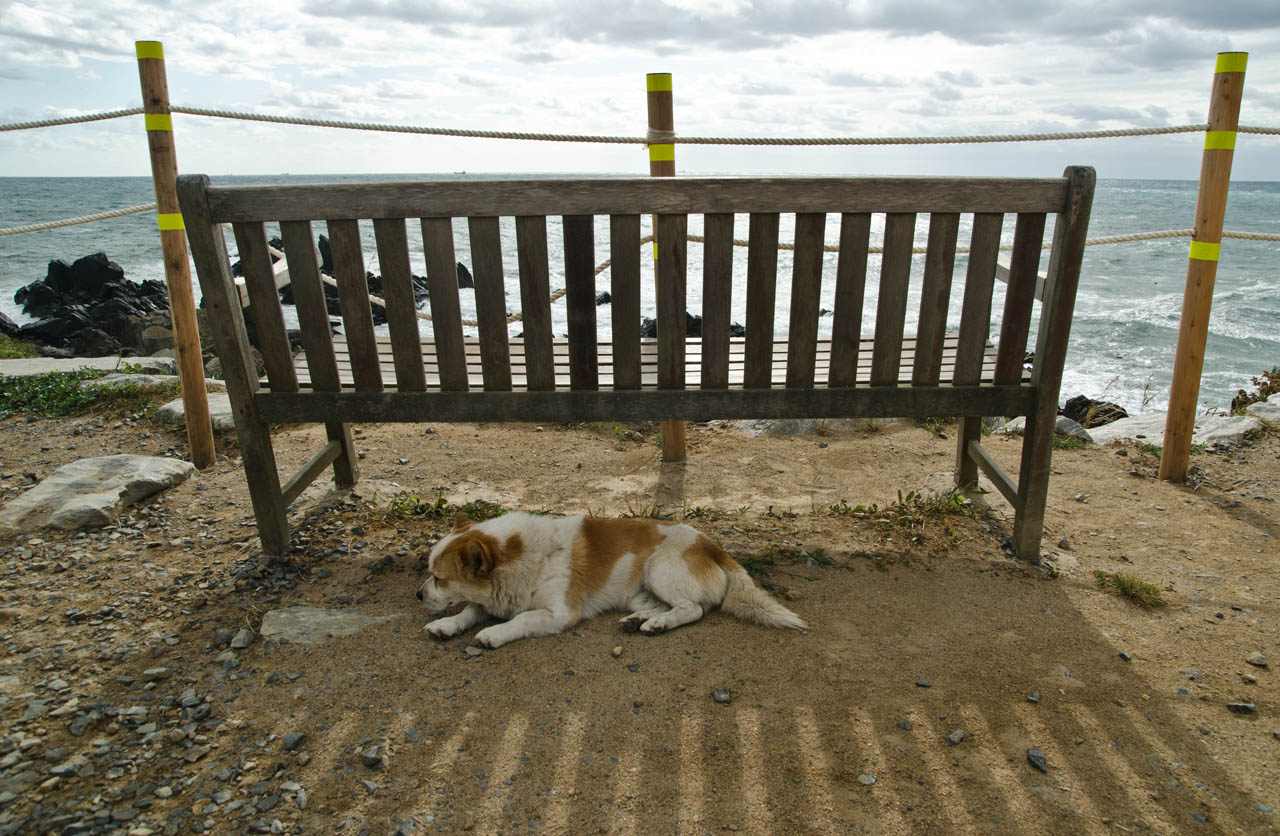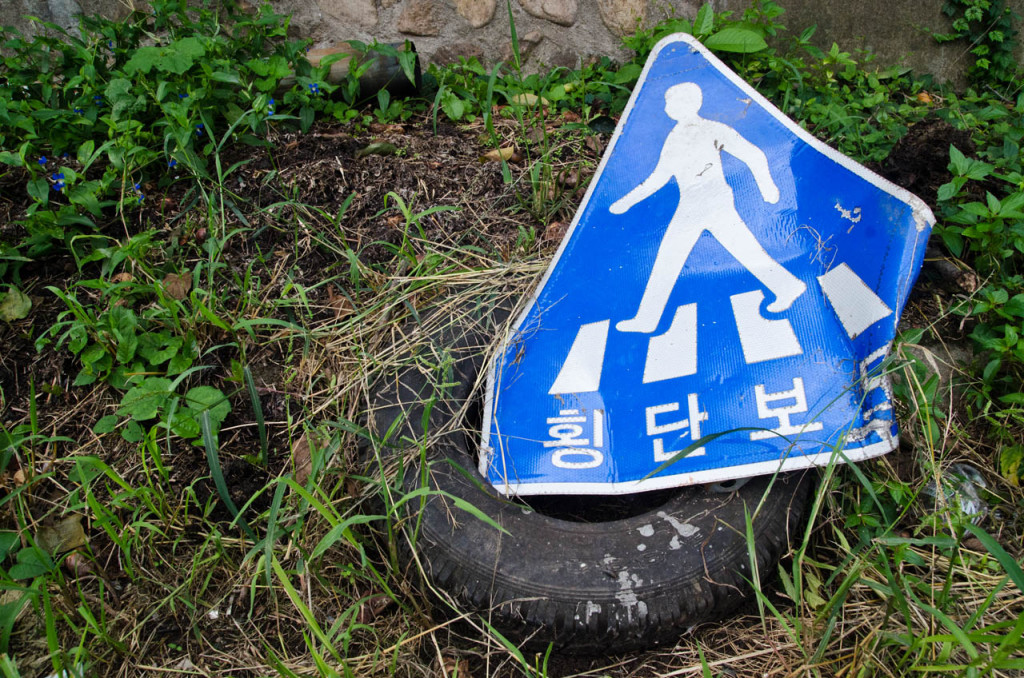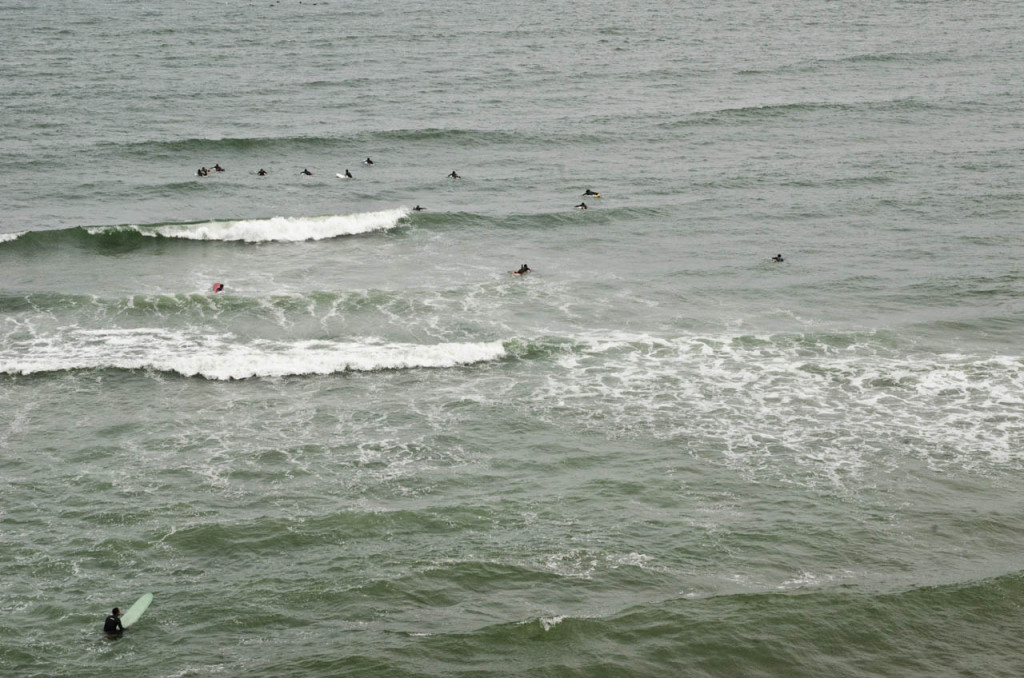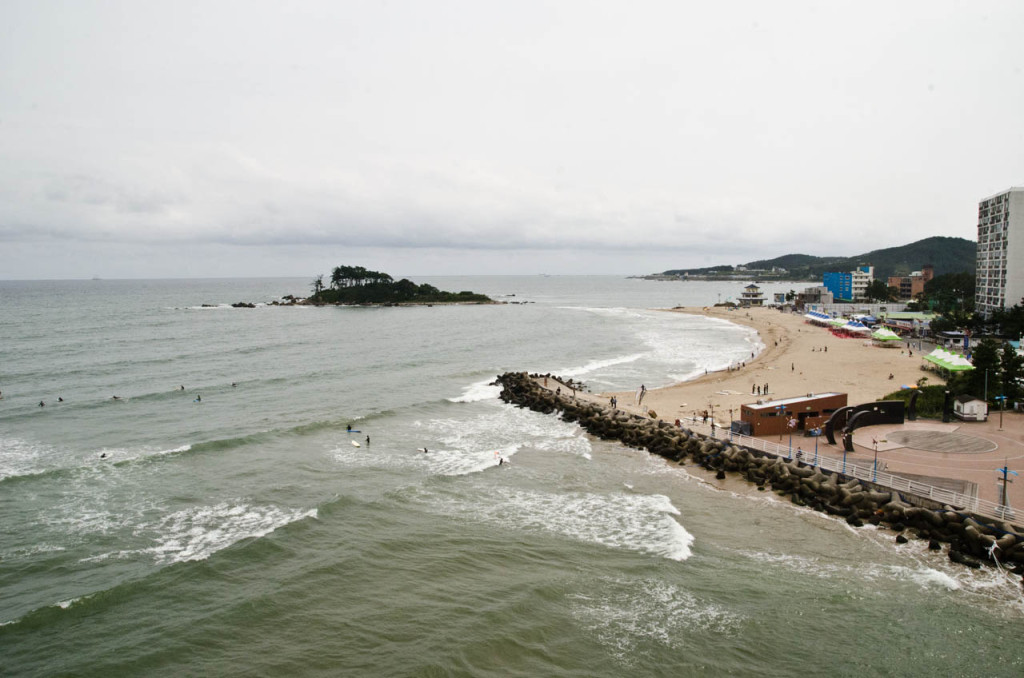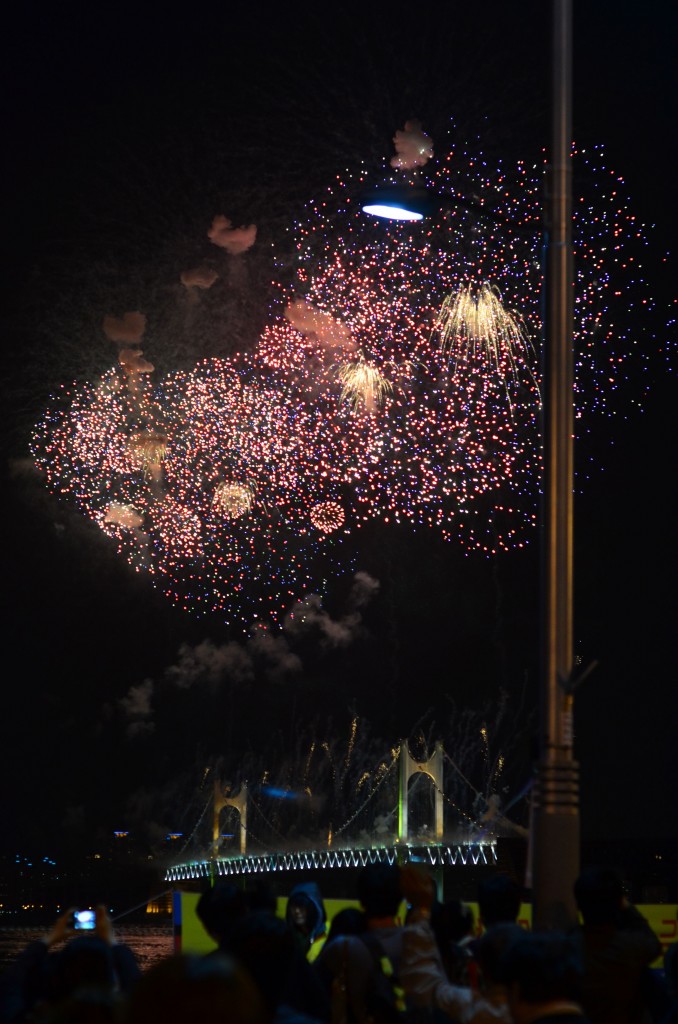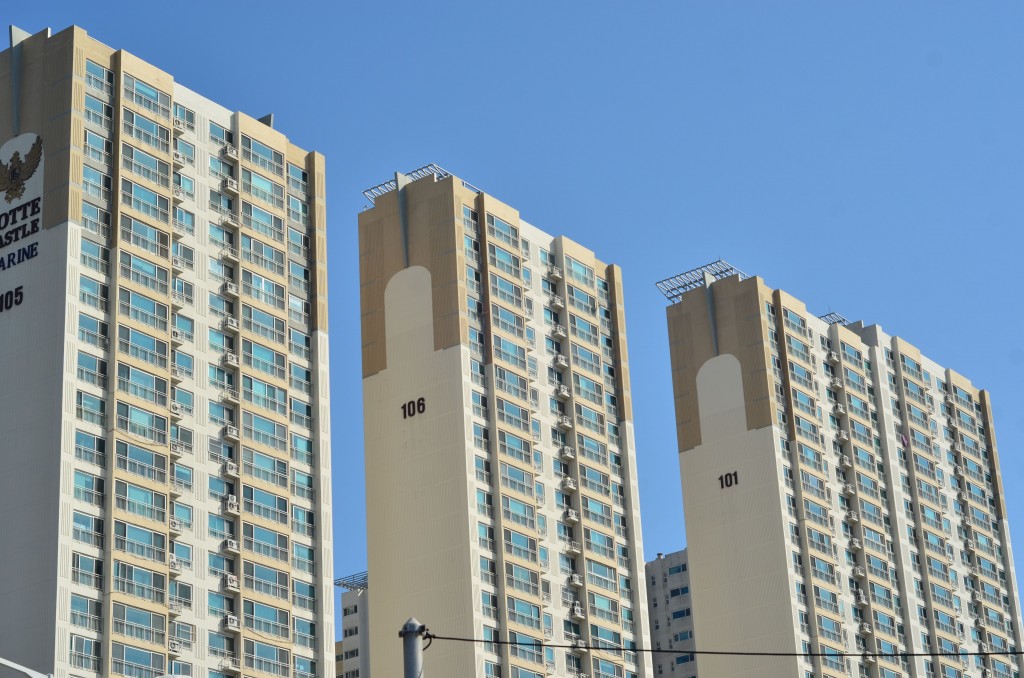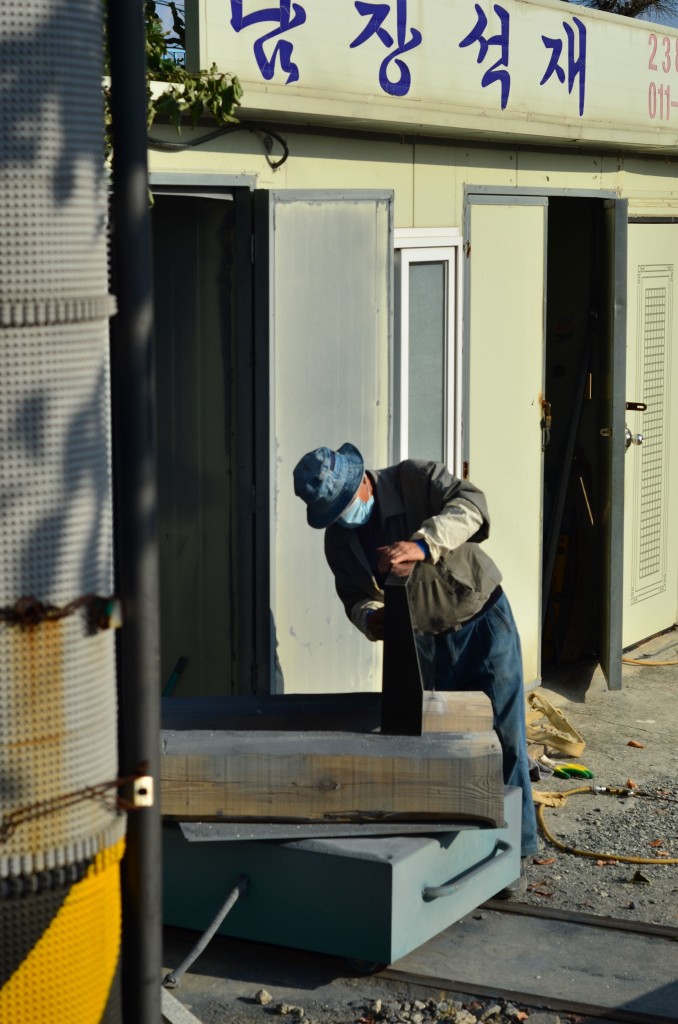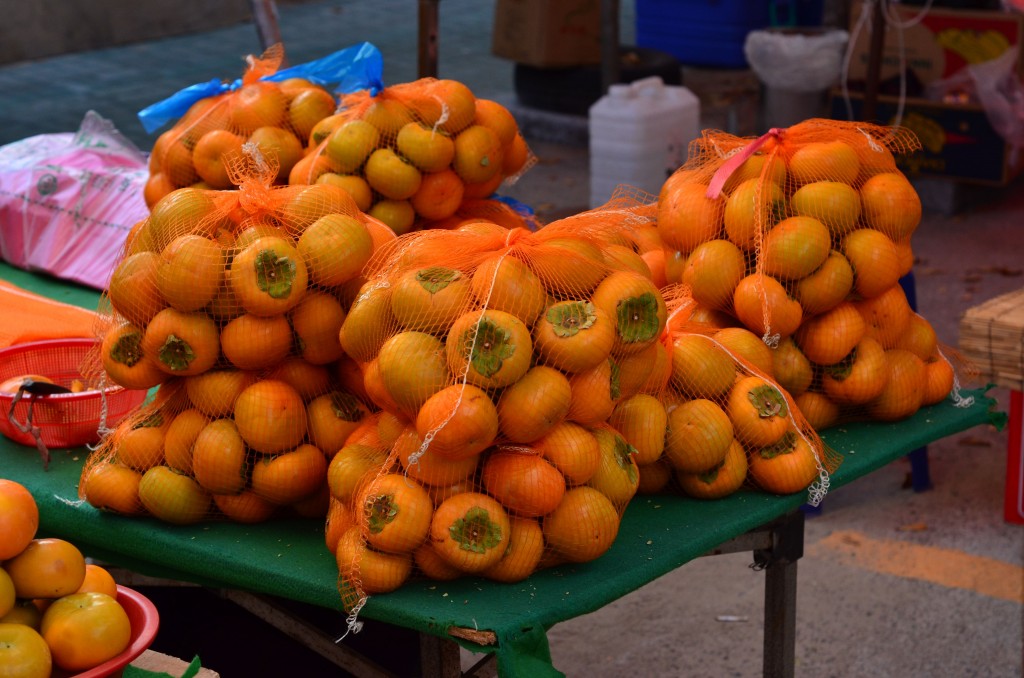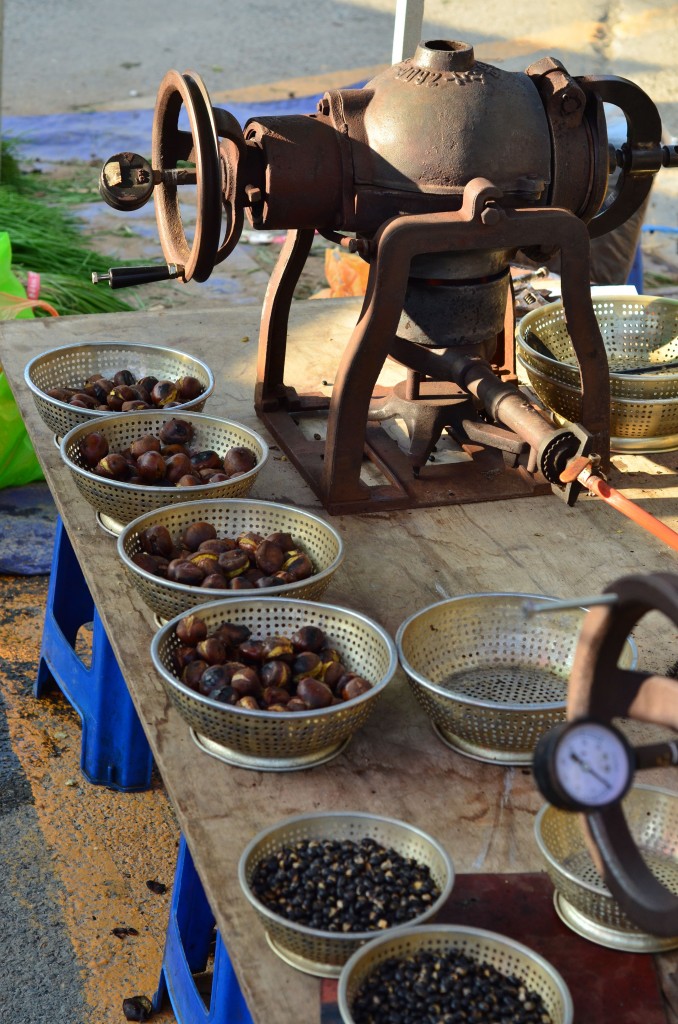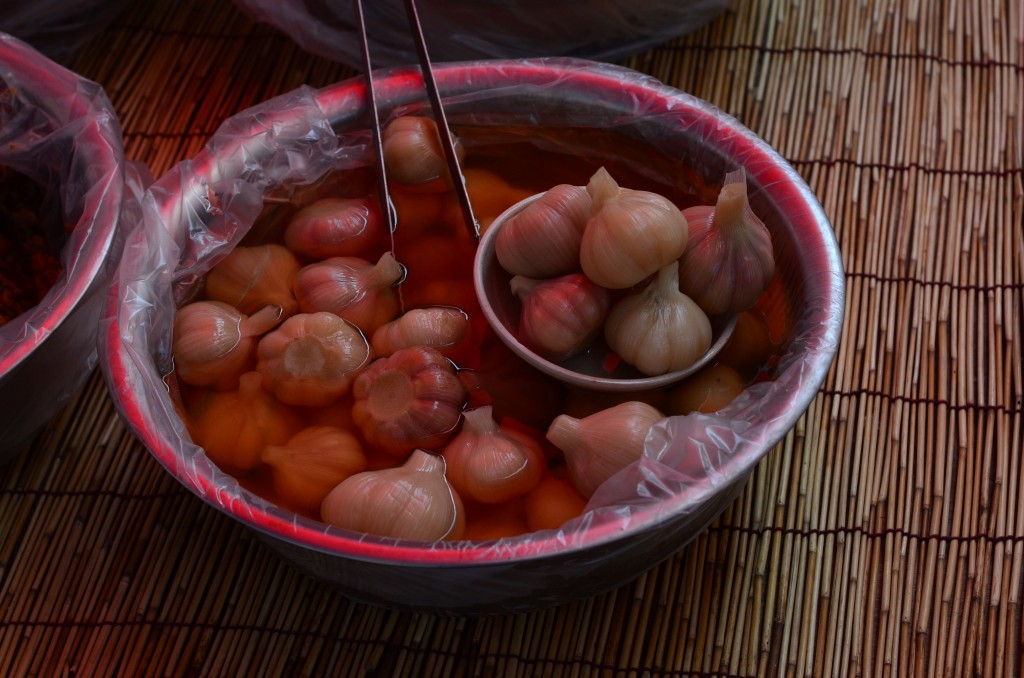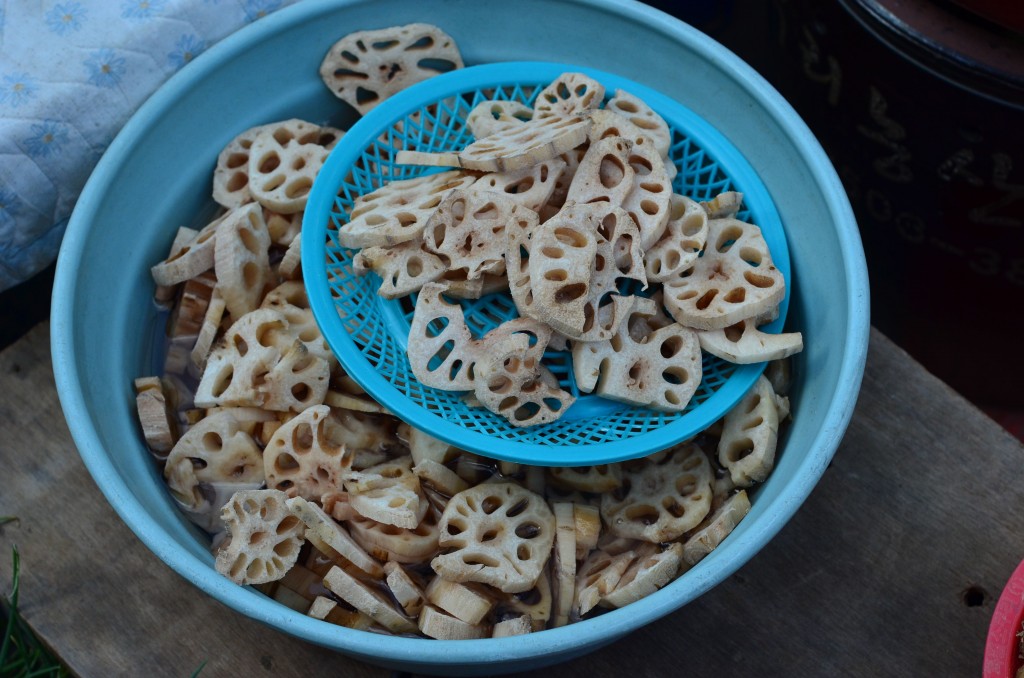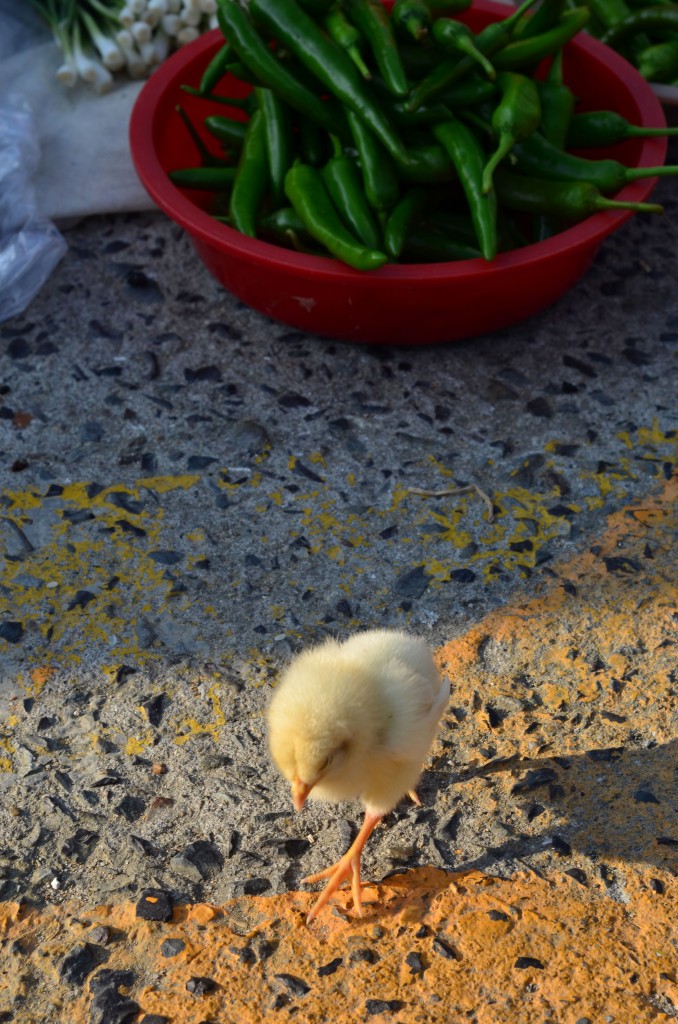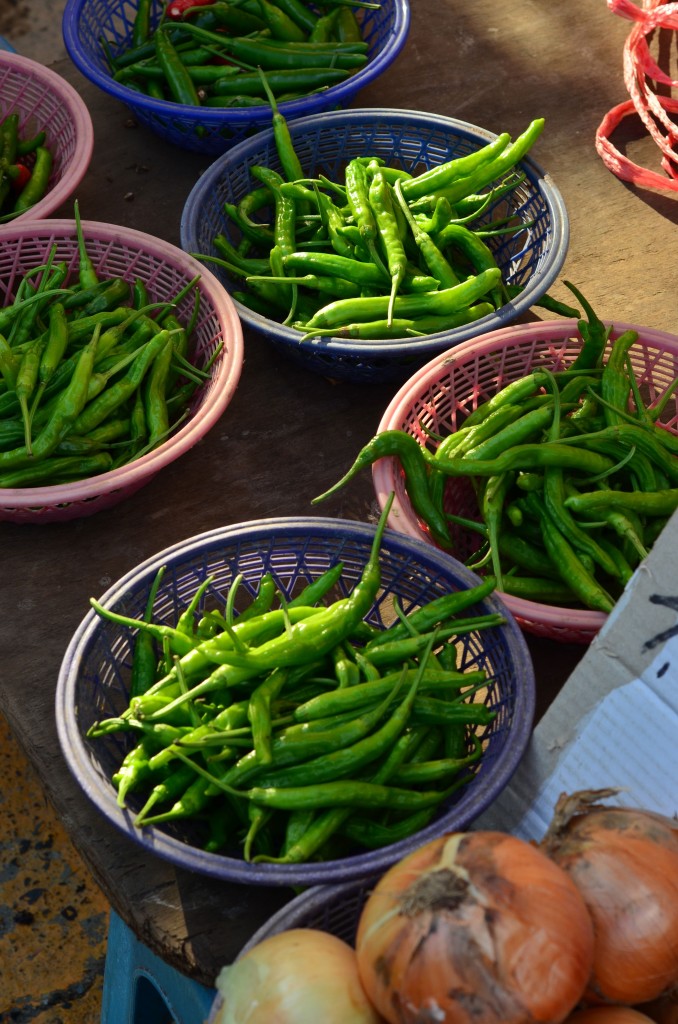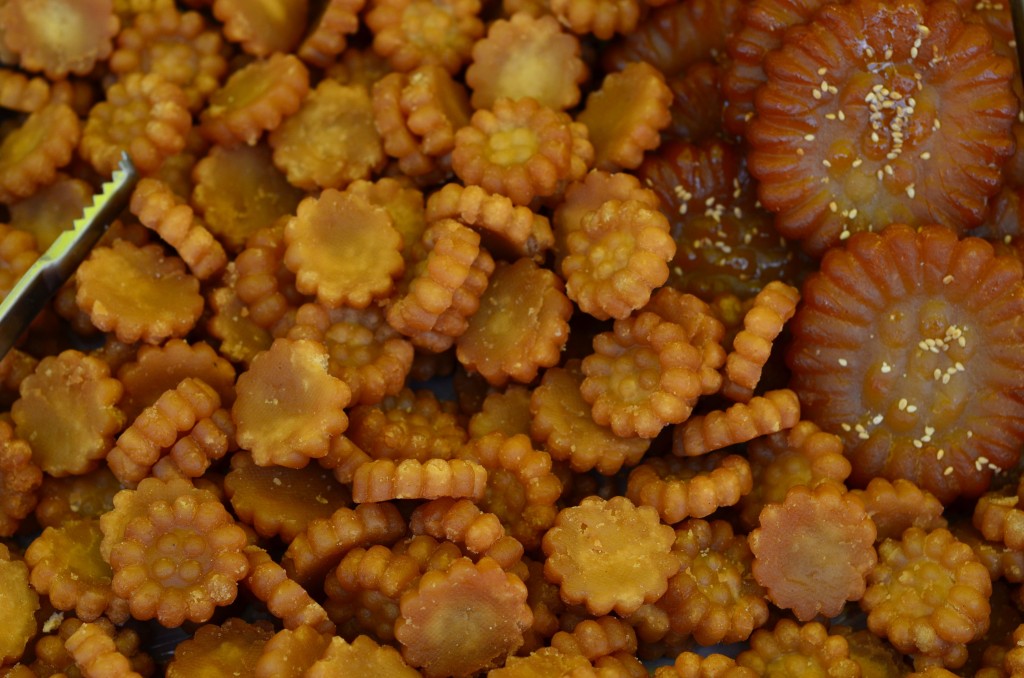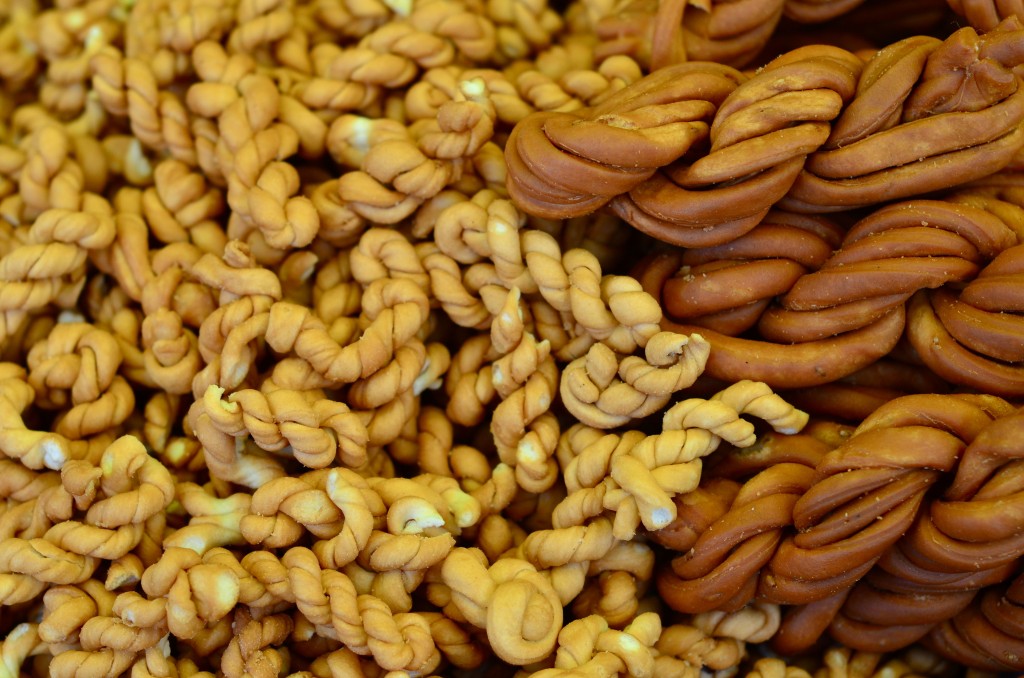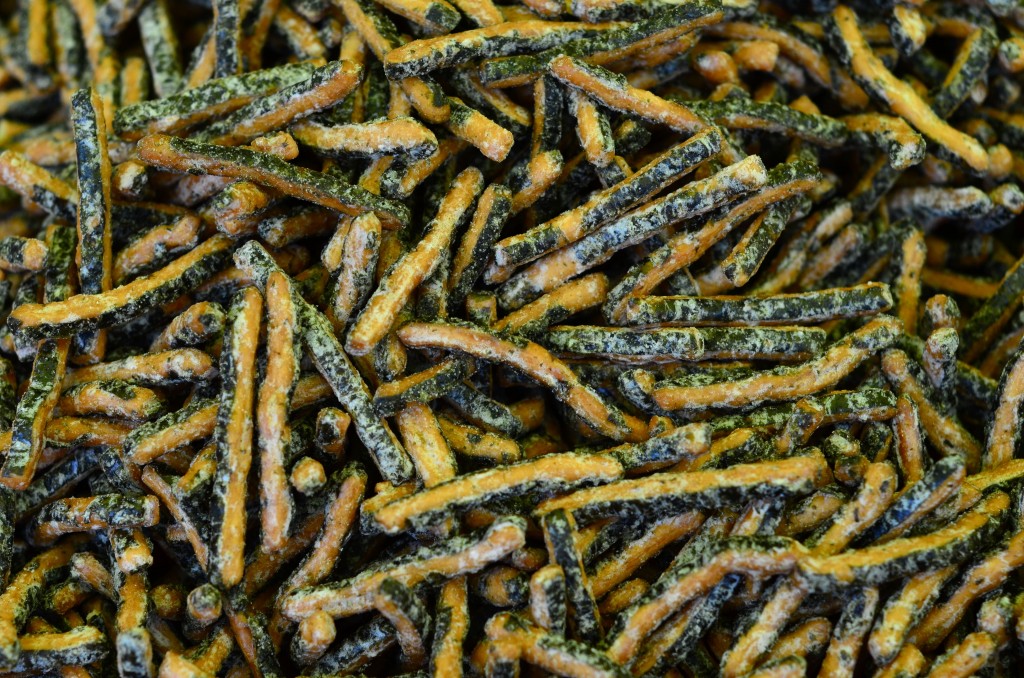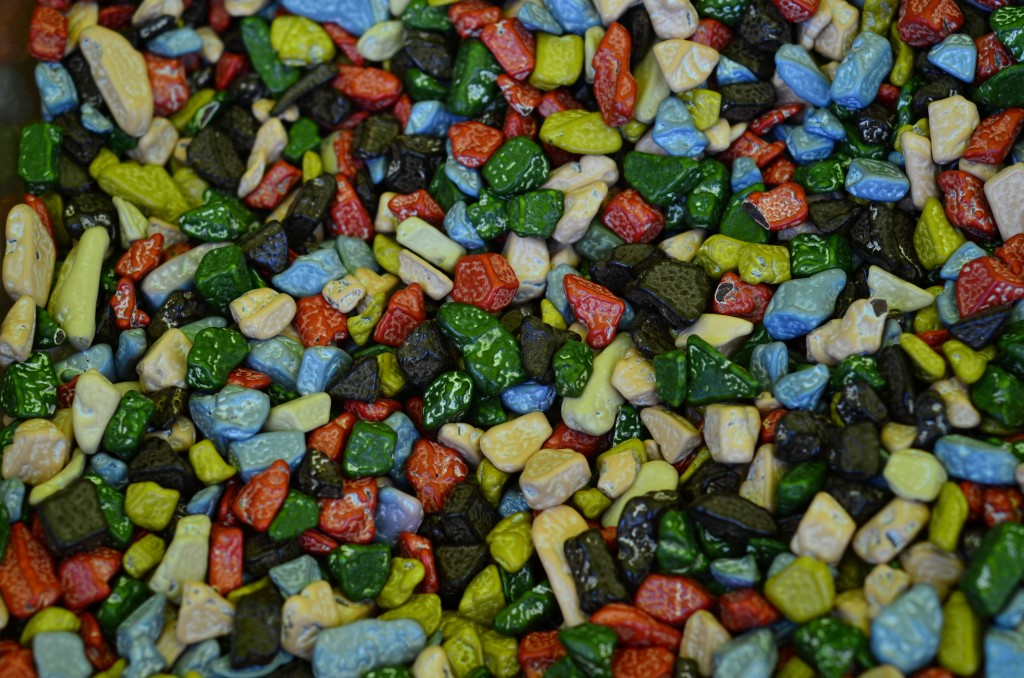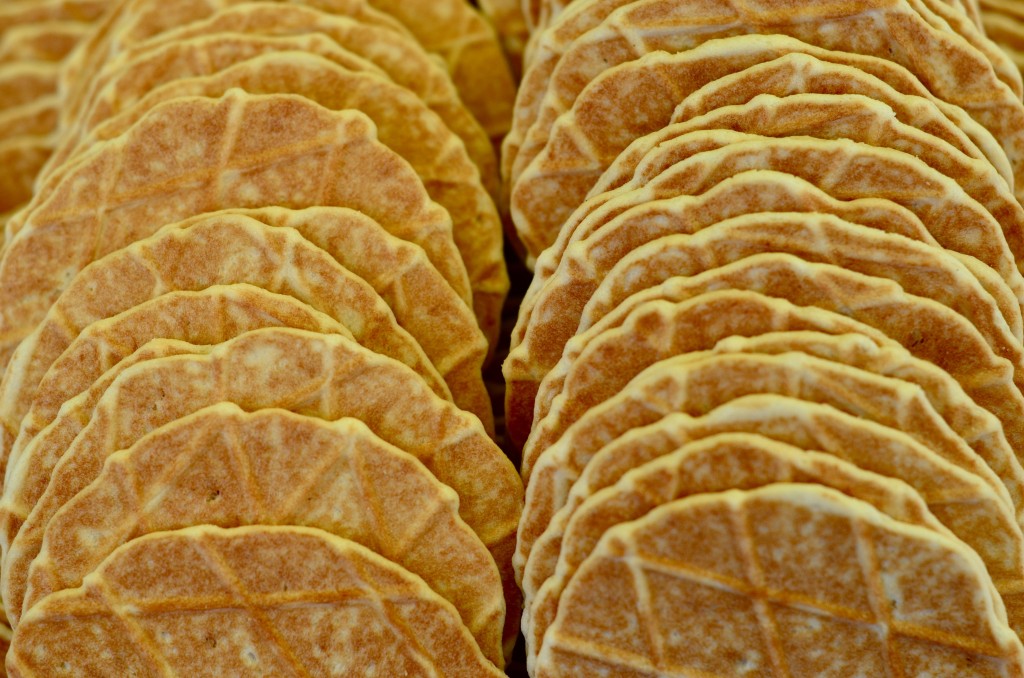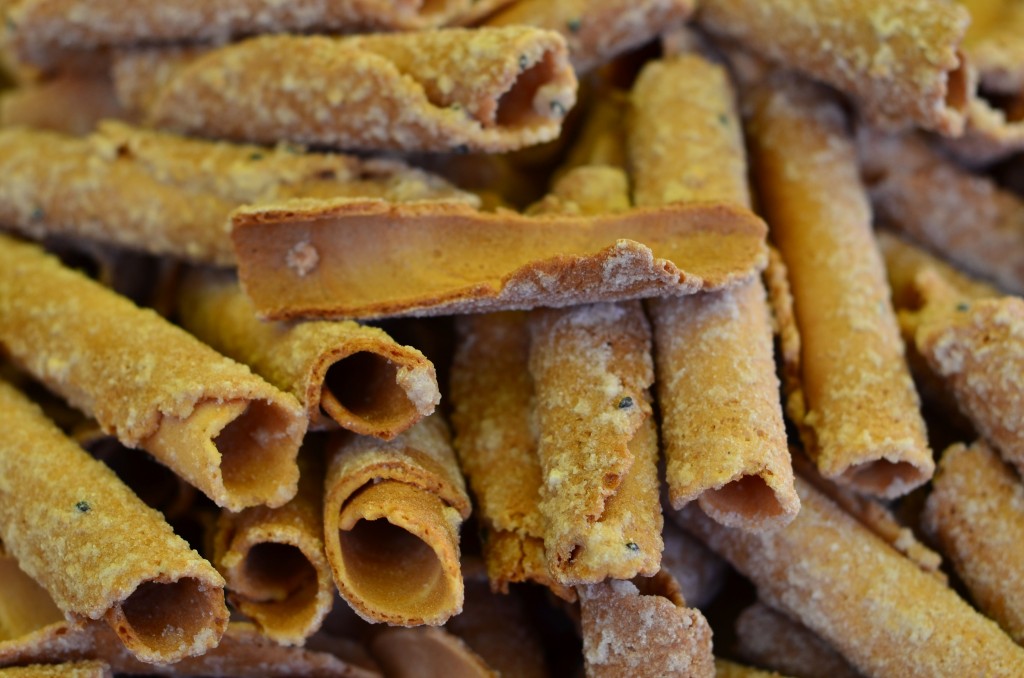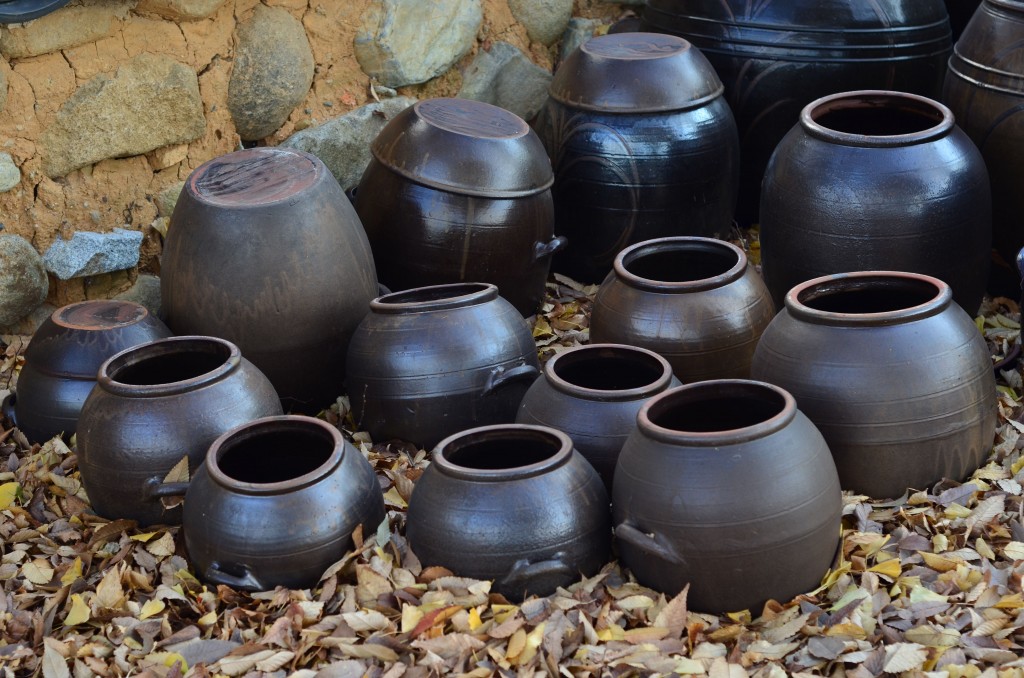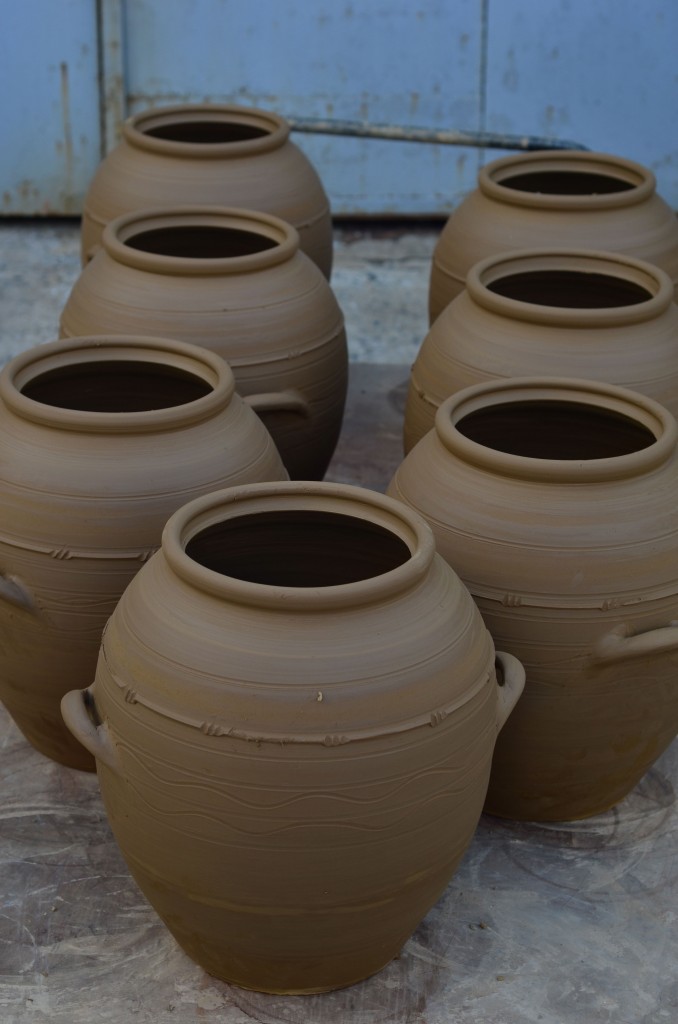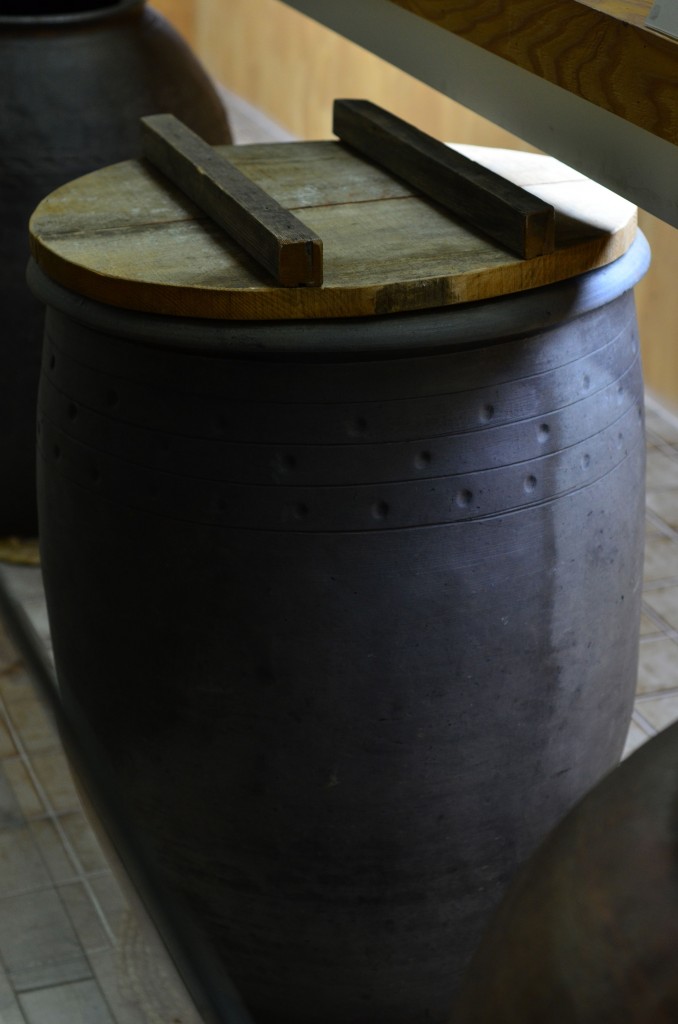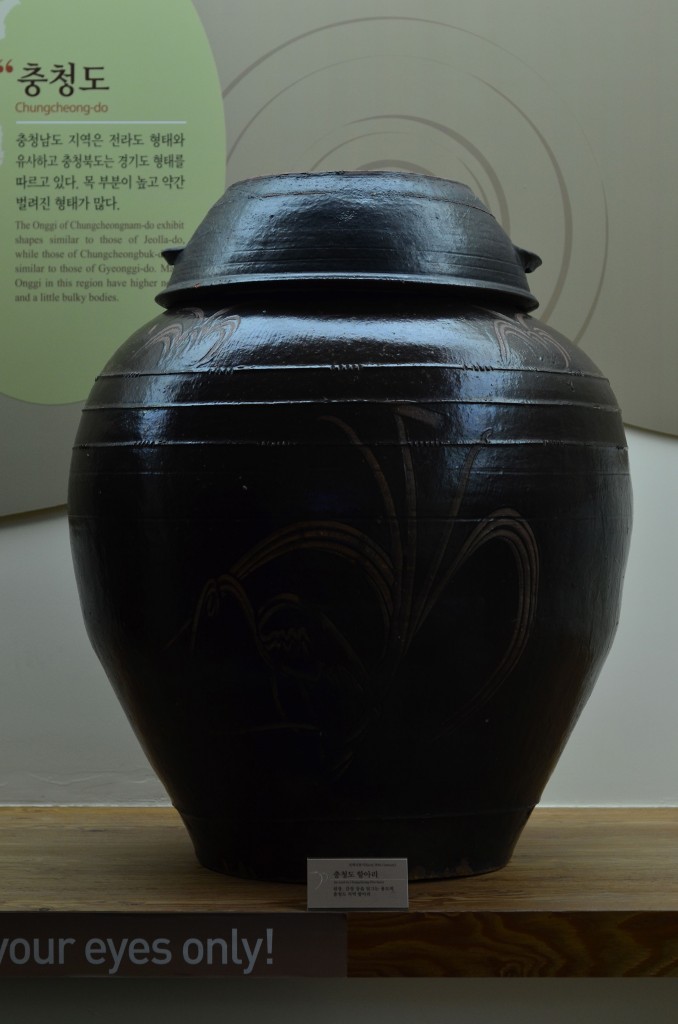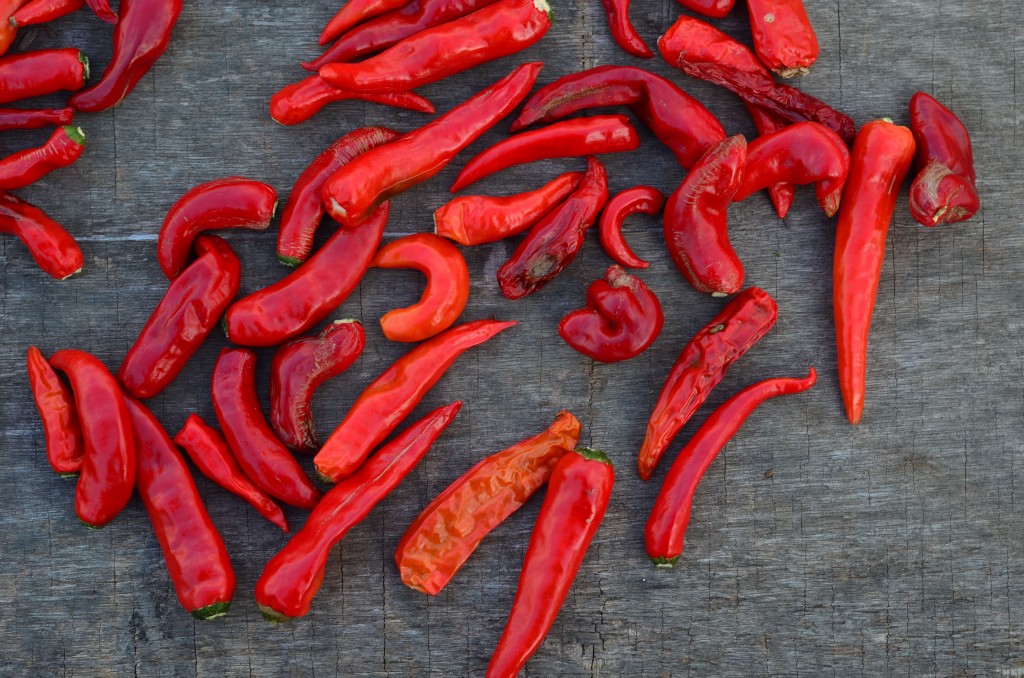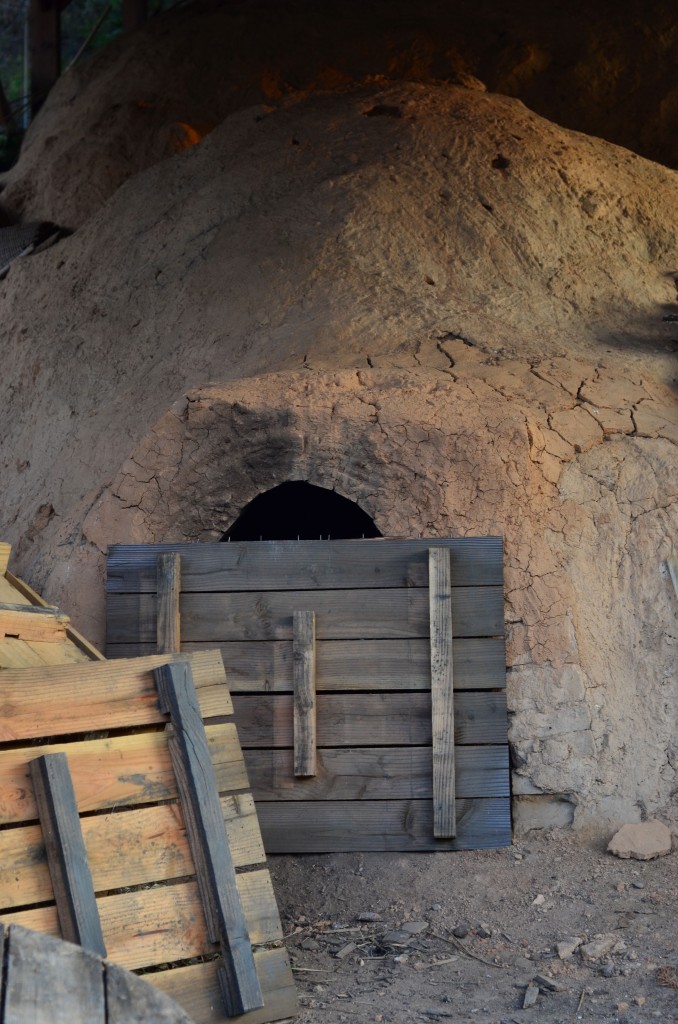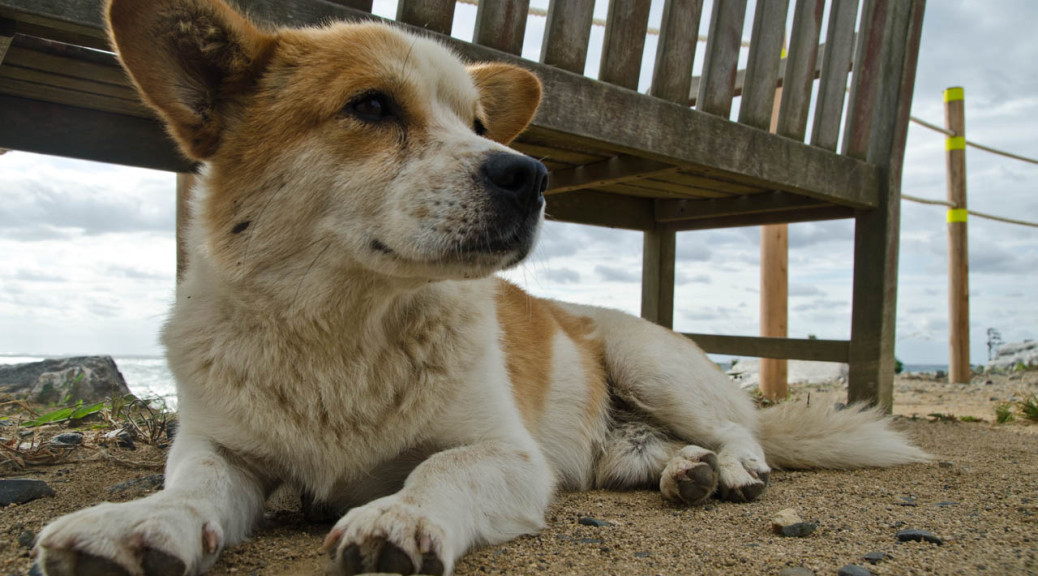
Tag Archives: ulsan

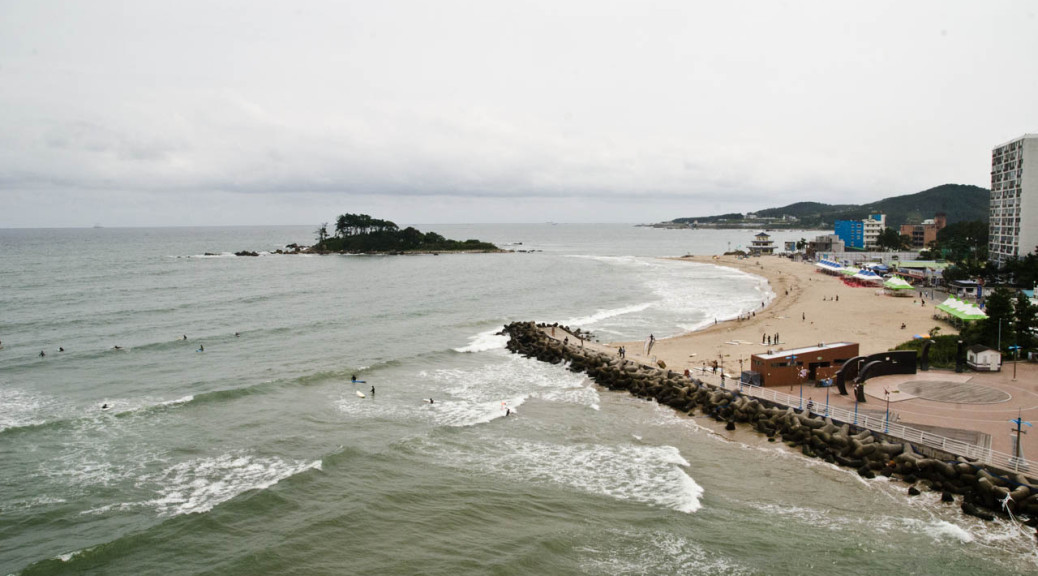
Jinha beach
Protected: Japanese Castles in Korea 1592-98 (part 2)
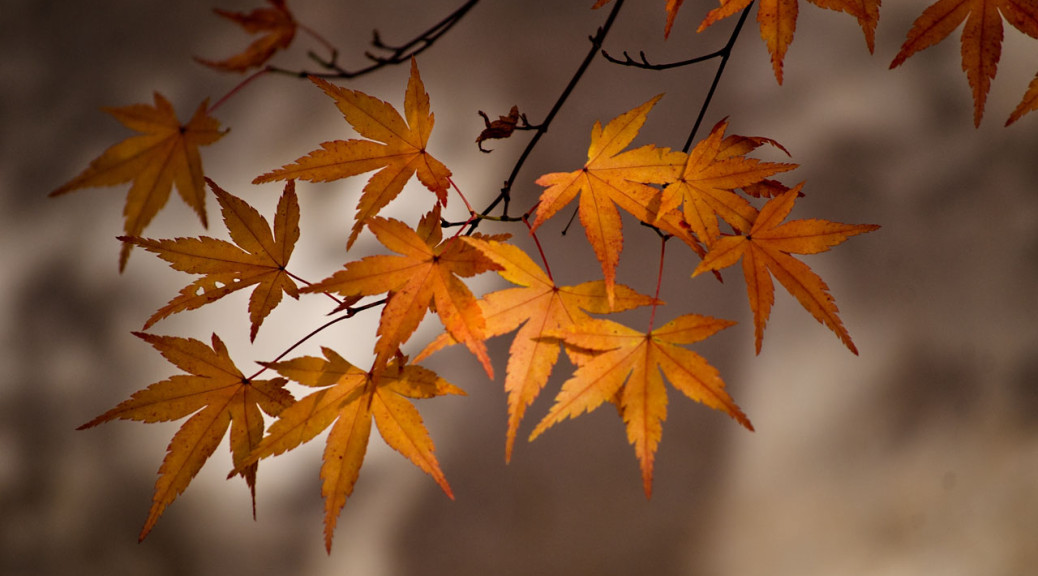
Fall in Ulsan 蔚山 and a cat named Karen
Sunday, November 15. We took a city bus north to Ulsan, about 1.5 hours from Banyeo-dong. We had ourselves some lunch.
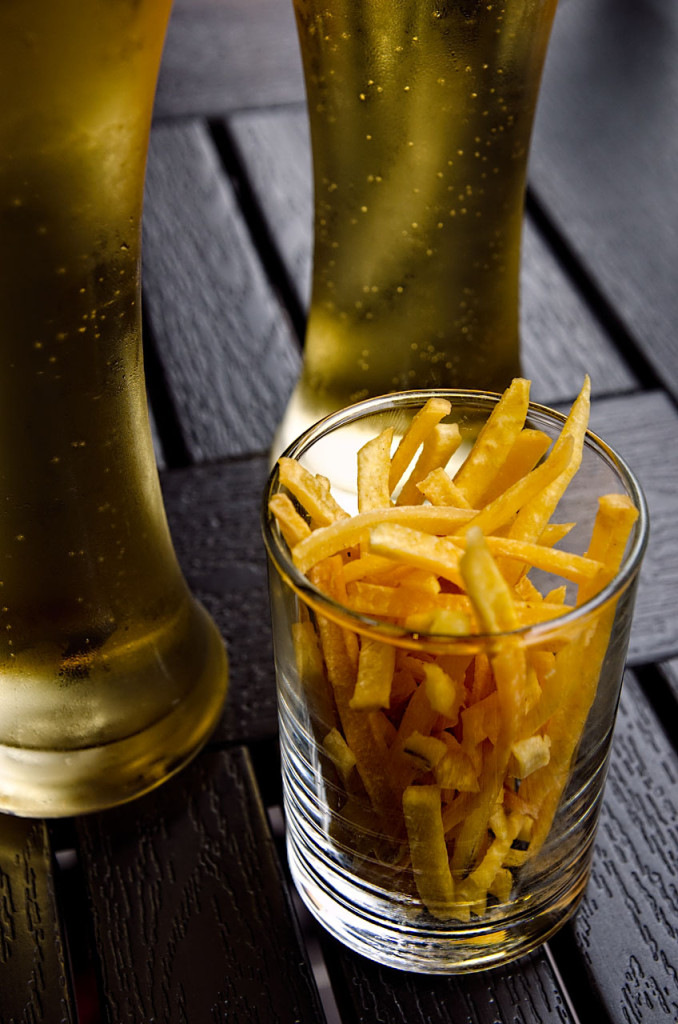 Fries.
Fries.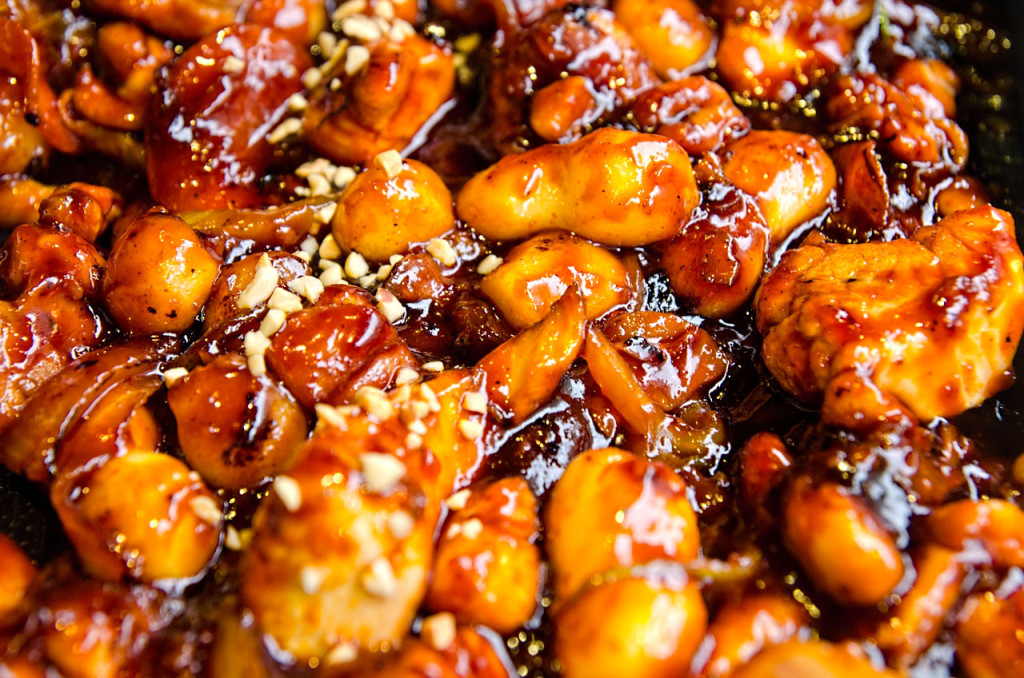 Spicy chicken and beer.
Spicy chicken and beer. 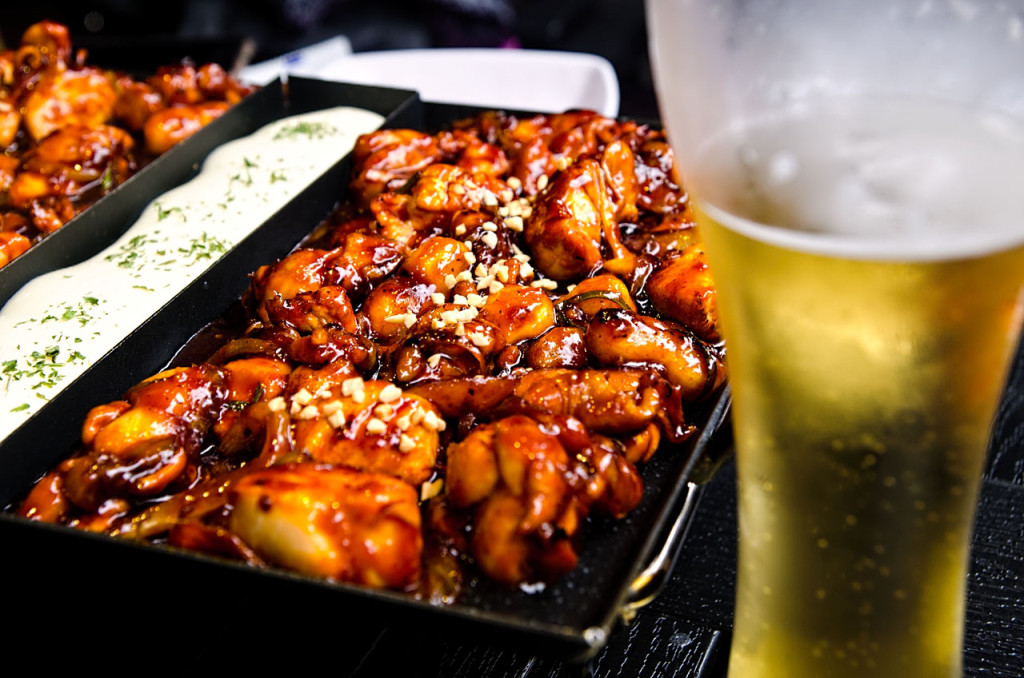 We walked around Munsu Football Stadium to see the fall foliage.
We walked around Munsu Football Stadium to see the fall foliage.
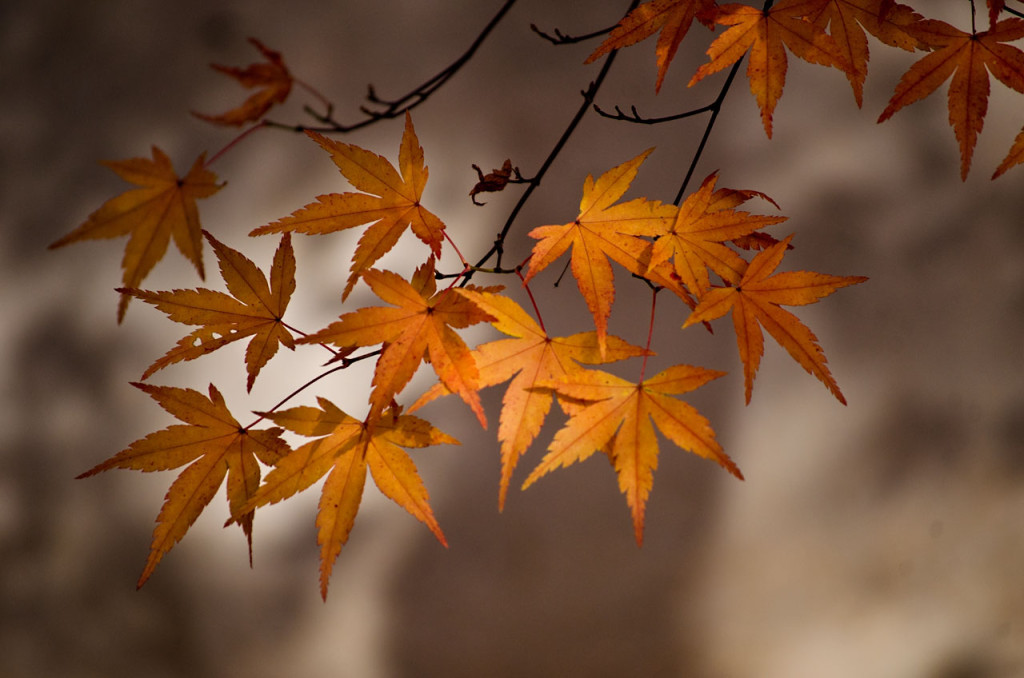 We saw 단풍 leaves. (Asian Maple 紅葉).
We saw 단풍 leaves. (Asian Maple 紅葉). 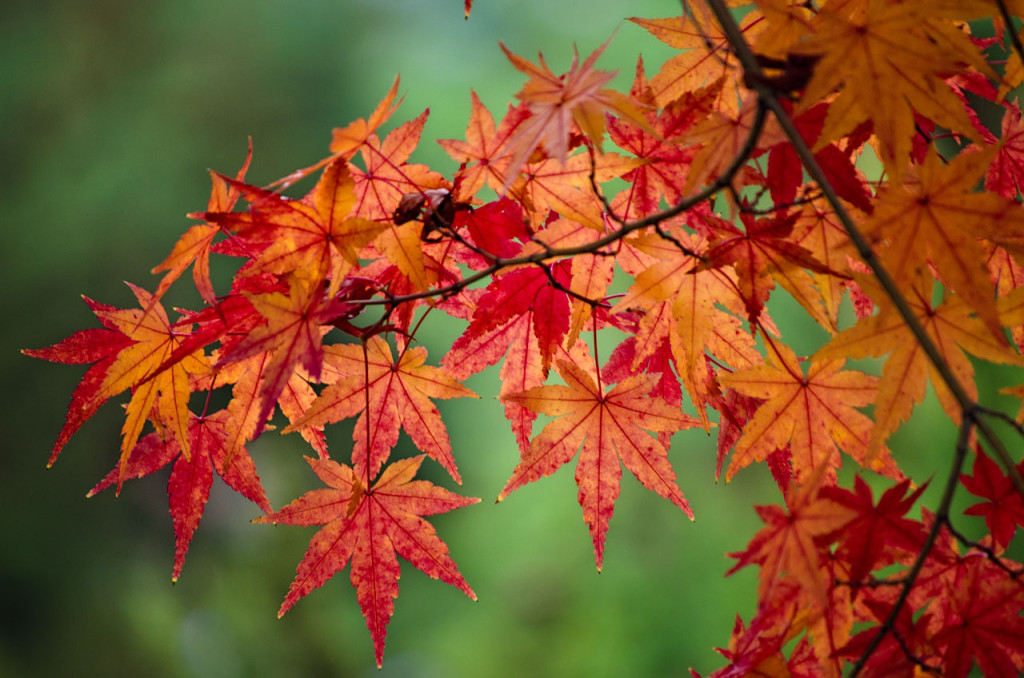
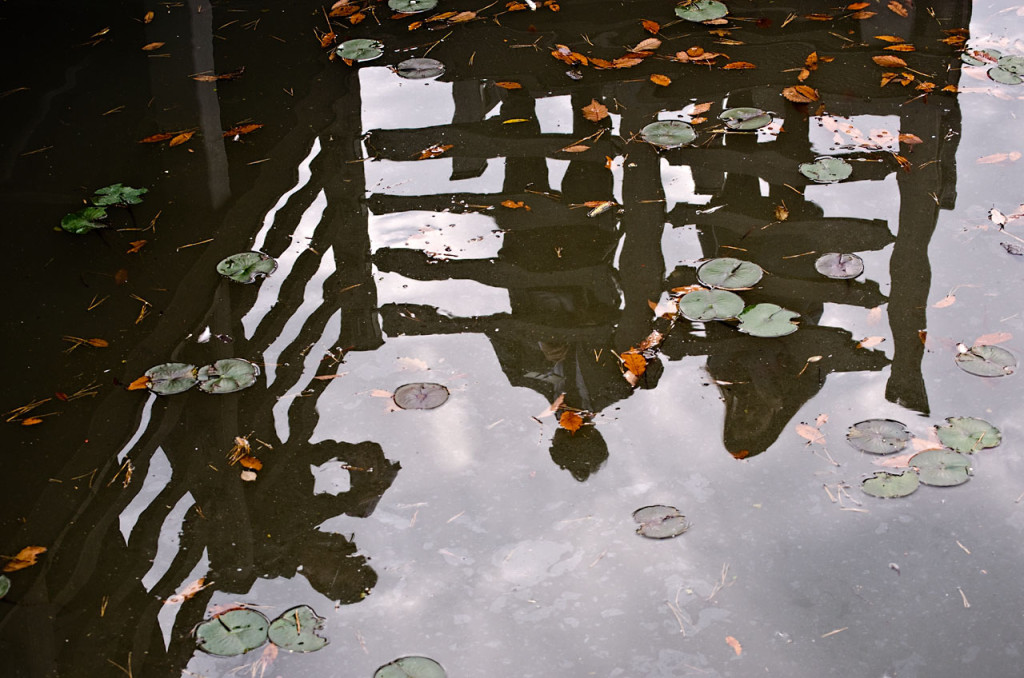 People fed 비단잉어 at Ok-dong ji.
People fed 비단잉어 at Ok-dong ji.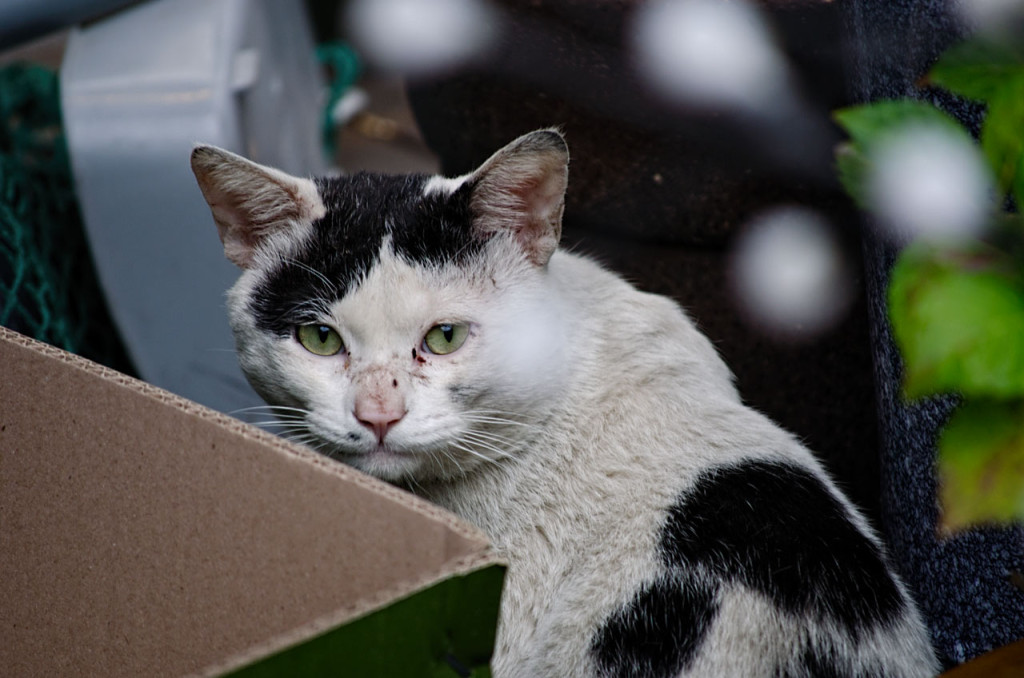 A tomcat snacked on scraps outside a bubble tea shop.
A tomcat snacked on scraps outside a bubble tea shop. 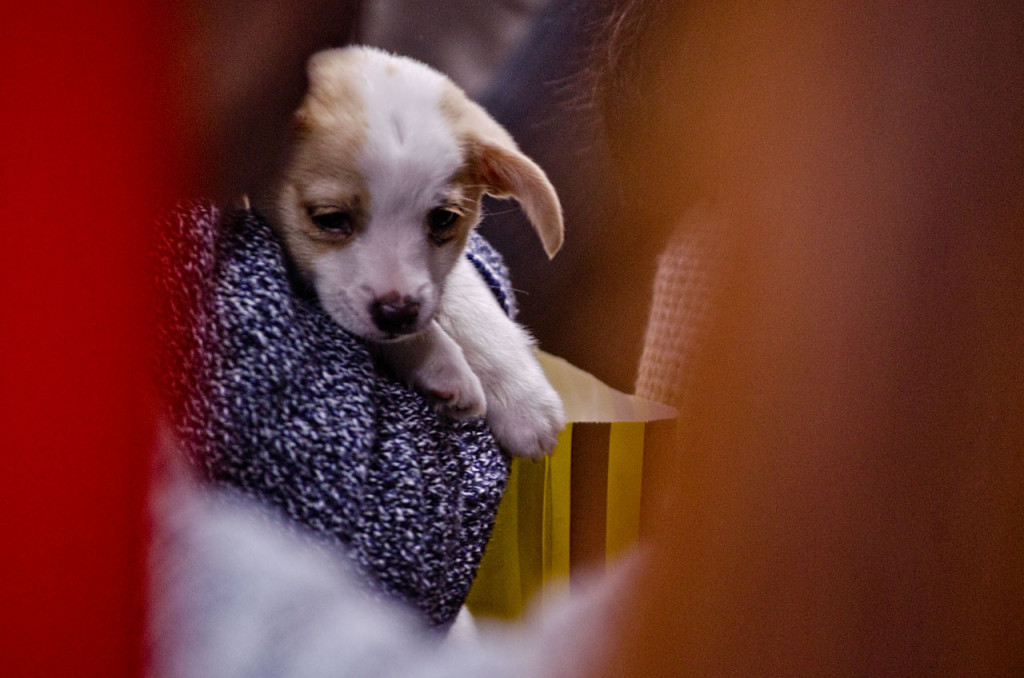 Later that night in Busan, an old man got on bus 80 near PNU. He was carrying a large paper shopping bag. While he stood near the back doors in the crowded bus, the bag’s bottom ripped open and a puppy fell onto the bus floor. The puppy looked dazed. The man picked up the puppy and put a finger to his mischievous smile. Over 25 years ago, I went with my mom and dad to Valparaiso. My dad was selling his mother’s house on Cerro Mariposa. After doing his tramites at the notaria, we walked up a hill to a big house that was giving away kittens. My dad used to say gatos porteños were la ultima chupa del mate in terms of cats. We had to get a new one in Valparaiso as the last of our porteño cats had passed away. According to him, these gatos porteños were among the best roof crawlers in the world and had most likely descended from a fine lineage of British cats brought to the port by Lord Cochrane during the early days the Chilean War of Independence. So the cat lady at the big house lead us down a long corridor and opened a white room with a high ceiling and the floor covered with newspapers. The cats were all over. It smelled of piss and shit. I picked a black and white cat that had batman mask fur markings and a mustache. My dad shoved the cat inside a blue bolsa de feria. The cat was not happy. Back on the plano of the port we hailed a trole and rode around the city with the cat growling from the bag. Because the cat had attempted several escapes while in transit, my dad folded the bag around the cat so the whole package looked like a pissed off blue salchicha. In Los Andes, my mom christened the cat Karen after her own sister. Karen the Cat lived a peaceful life on the roof of our house until her death in the early 2000s.
Later that night in Busan, an old man got on bus 80 near PNU. He was carrying a large paper shopping bag. While he stood near the back doors in the crowded bus, the bag’s bottom ripped open and a puppy fell onto the bus floor. The puppy looked dazed. The man picked up the puppy and put a finger to his mischievous smile. Over 25 years ago, I went with my mom and dad to Valparaiso. My dad was selling his mother’s house on Cerro Mariposa. After doing his tramites at the notaria, we walked up a hill to a big house that was giving away kittens. My dad used to say gatos porteños were la ultima chupa del mate in terms of cats. We had to get a new one in Valparaiso as the last of our porteño cats had passed away. According to him, these gatos porteños were among the best roof crawlers in the world and had most likely descended from a fine lineage of British cats brought to the port by Lord Cochrane during the early days the Chilean War of Independence. So the cat lady at the big house lead us down a long corridor and opened a white room with a high ceiling and the floor covered with newspapers. The cats were all over. It smelled of piss and shit. I picked a black and white cat that had batman mask fur markings and a mustache. My dad shoved the cat inside a blue bolsa de feria. The cat was not happy. Back on the plano of the port we hailed a trole and rode around the city with the cat growling from the bag. Because the cat had attempted several escapes while in transit, my dad folded the bag around the cat so the whole package looked like a pissed off blue salchicha. In Los Andes, my mom christened the cat Karen after her own sister. Karen the Cat lived a peaceful life on the roof of our house until her death in the early 2000s.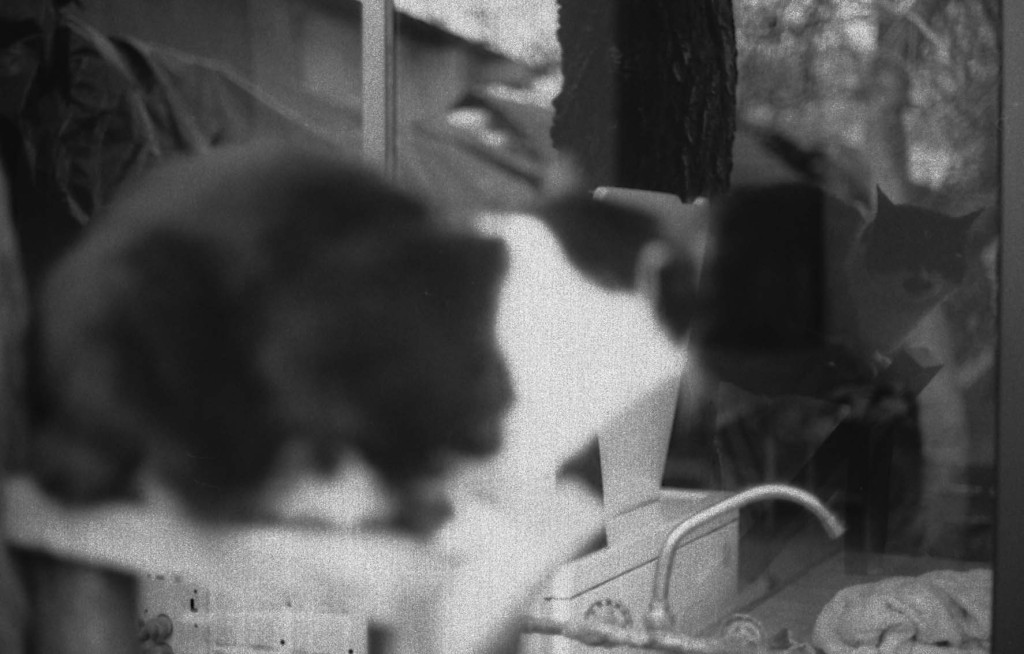
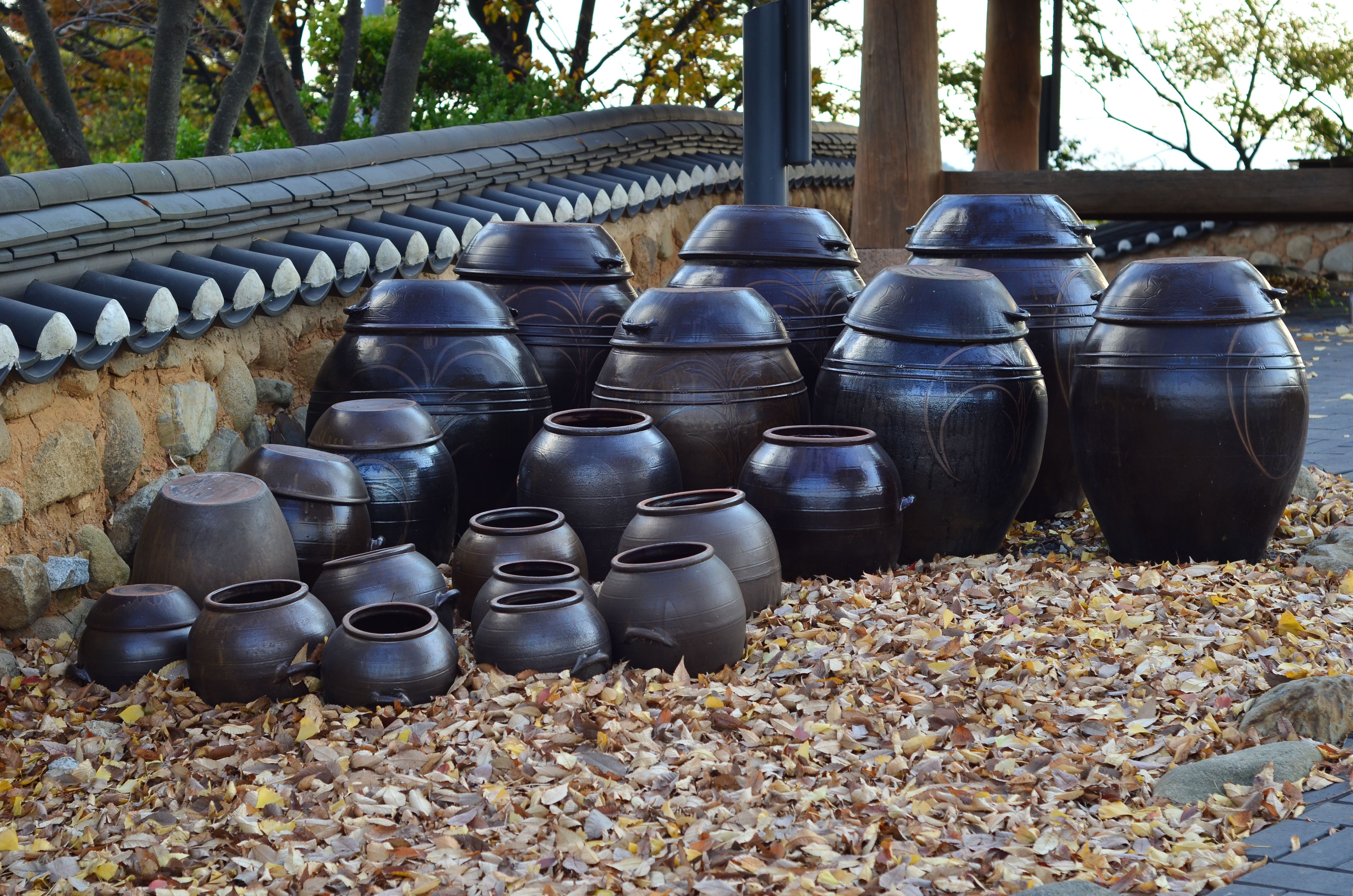
Snacky snacks y los onggis
La playa de Gwangalli (se pronuncia guangali) se prende con fuegos artificiales a finales de octubre. Desde la Ciudad Marina vemos la bateria pirotécnica en el puente quemar el cielo sobre la bahía.
Apartamentos en el distrito de Haeundae (se pronuncia Jeunde). Yo y la mayoría del pueblo de Busan vivimos en estos libreros.
Ositos de peluche llaman la atención en un café cerca de la playa de Haeundae en la ciudad de Busan.
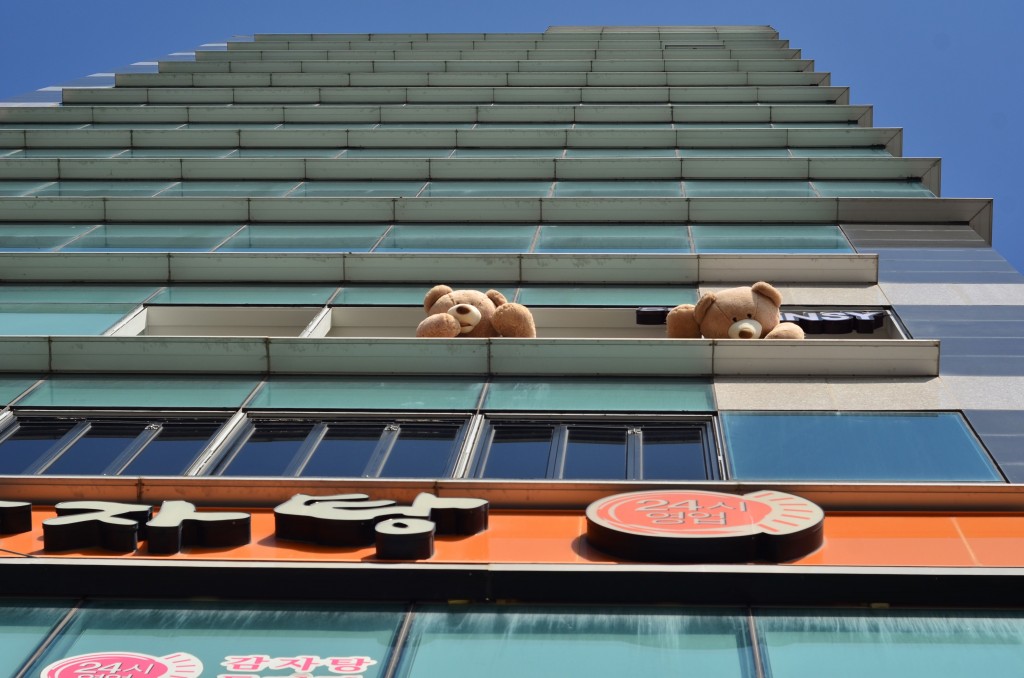
Un escultor de tumba le da los últimos toques a una lápida de granito negro típica de Corea. Ciudad de Ulsan.
En un mercado de Ulsan encontramos raízes comestibles grandes y chicas 골단초 뿌리
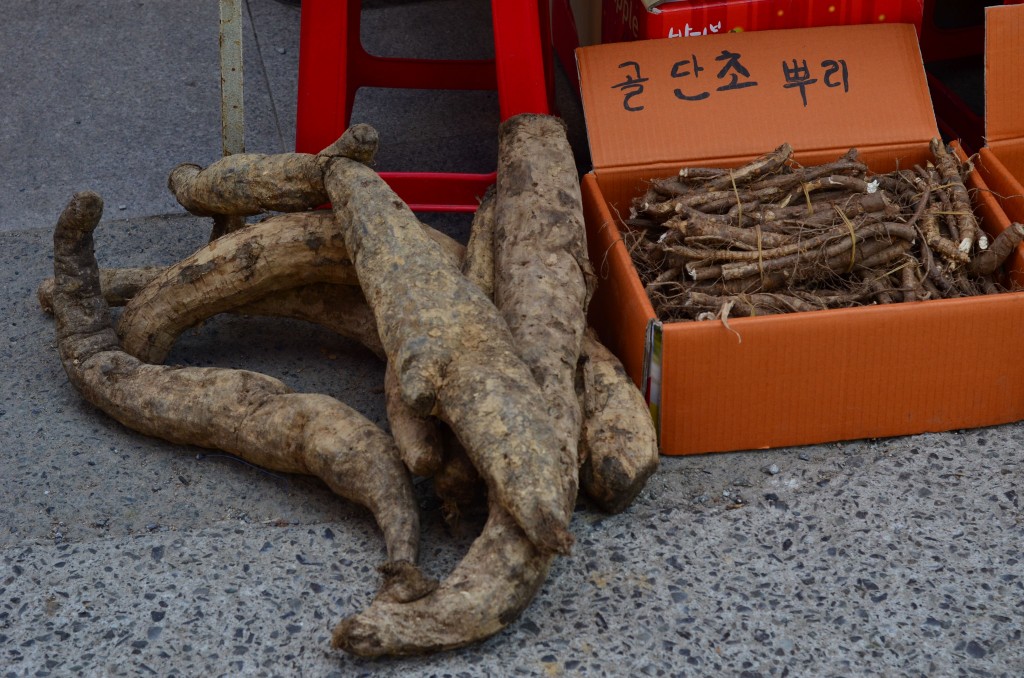 Y bolsas de caquis 감. Me recuerda el patio trasero de la casa en Los Andes en el tiempo de la “conquista” de ese territorio inhóspito. Cuando recién habiamos llegado y había selva, misterio, tribus imaginarias escondidas en el pasto largo y caquis desparramados como tesoros salmones en la tierra parda.
Y bolsas de caquis 감. Me recuerda el patio trasero de la casa en Los Andes en el tiempo de la “conquista” de ese territorio inhóspito. Cuando recién habiamos llegado y había selva, misterio, tribus imaginarias escondidas en el pasto largo y caquis desparramados como tesoros salmones en la tierra parda.
Castañas y maquinas para tostar castañas 군밤
Ajos en escabeche 마늘 짱아치
Y un pollito vagabundo cagado de frío. Se veia tan solitario y frágil en un mundo de rabanos y ajies gigantes. De por ahí salio una vieja, lo llamo y lo reto por vago. 병아리
A wanderer passed under our feet. It looked lost in a world of giants radishes and green peppers. Over by the red corner pillar of the open market smiled a chick ajuma. She tapped a cardboard box filled with chicks and made calling sounds. The little lost chick turned around and hurried away towards its human mother.
Ajíes verdes. La palabra ají en corano (Gochu 고추) también significa pichula.
Peppers and the word for penis in Korean. Outraged, I look at one of my teenage students at the institute where I teach English “What did you just say?” I’m trying to keep a sanctity of the classroom face. His snicker is softened and turns into a nervous smile. He says “gochu.” The word for both pepper and penis in Korean. “What does that mean?” Him and I retain innocent faces. “Peppa” he says grinning and thinking he’s so smart-tuh. Then the class clown quickly stands up and points to his genitals. “It also means this, teacher, yeeeees!” and throws his head back laughing. Plop.
Ahí me gustaste. Estos me apetecen y tienen forma de flor. Están hecho con le mismo ingrediente predilecto de los cabros chicos en todo el mundo: azúcar.
We reached the snack area of the market. I used to eat a lot of these flower shaped ones. At the market, a fat little korean boy holding a piece of chicken and an opened 10-piece box of chicken nuggets strolls by absent-mindedly. “Oh mashiketa…” (oh, so delicious 맛있겠다 ) I say fake-salivating and pretend to grab one of his chicken nuggets to see what he does. I’m used to teasing children at school. He doesn’t notice me; his eyes are trained on the mounds of glisening snacks. His mother sees me, however, and smiles amused. She pulls him away, giggles and warns him about the hungry foreigner as she looks my way.
Estos son como trenzas
Estas son como ramitas pero con un toque alga marina. Los japoneses, los coreanos y los chilenos son buenos para comer alga. Somos, después de todo, hermanos del Pacífico. Cochayuyo no he visto todavía.
Esto ya es algo menos exótico… chocolate… para el Jorgito.
Estos son como cuchuflis pero sin manjar.
Tradicionalmente los coreanos guardan verduras en escabeche en cántaros de barro. Hay grandes, chicos, guatones, flacos, con barniz, sin barniz, con oreja, sin oreja; de todos los portes y gustos. Visitamos un museo y pueblo artesanal en las afueras de la ciudad de Ulsan donde los hacían.
El museo esta en un pueblo artesanal patrocinado por la Hyundai Motors. La planta automotriz principal de la Hyundai esta situada a pocos kilómetros en la ciudad de Ulsan. El pueblo artesanal esta repleto de tiendas, alfareros y hornos. Los senderos y las calles que unen la comunidad están sembrados con cientos de cántaros imperfectos y quebrados.
Estos están listos para el horno.
El nombre en coreano de estos cántaros es onggi (옹기) y el alfarero que los hace es un onggijang (옹기장).
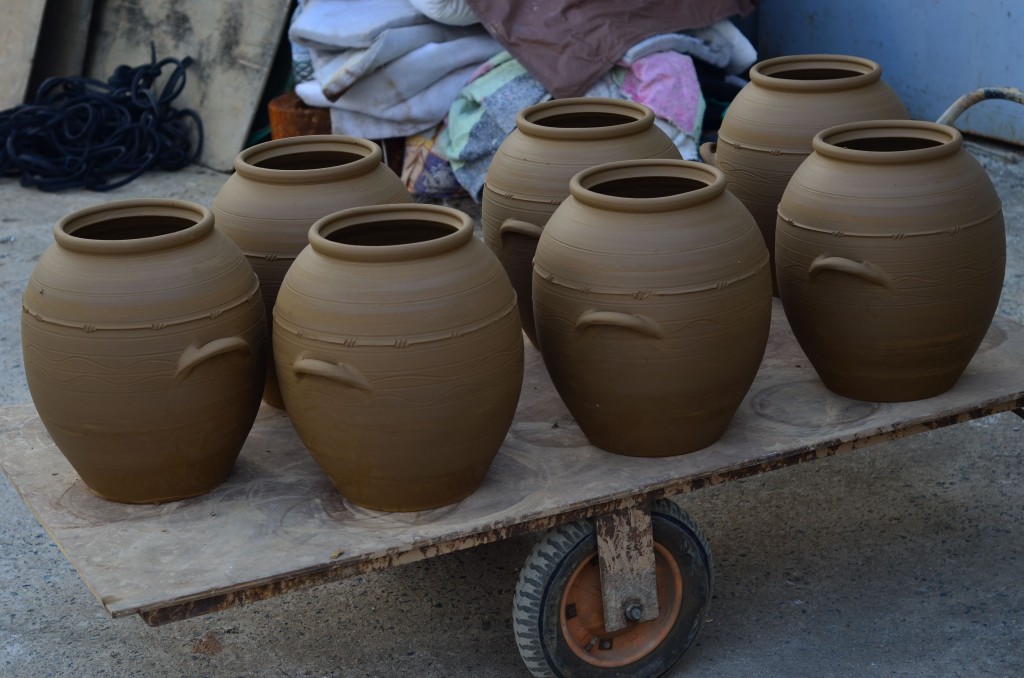
Un cántaro antiguo con tapa de madera.
Un diseño de la región de Chungcheong-do (충청도) que me gusta. Este tiene orejas y es corpulento como un matón mafioso o una matriarca coreana (아줌마).
En un sector de artesanía internacional encontramos esculturas peruanas antiguas.
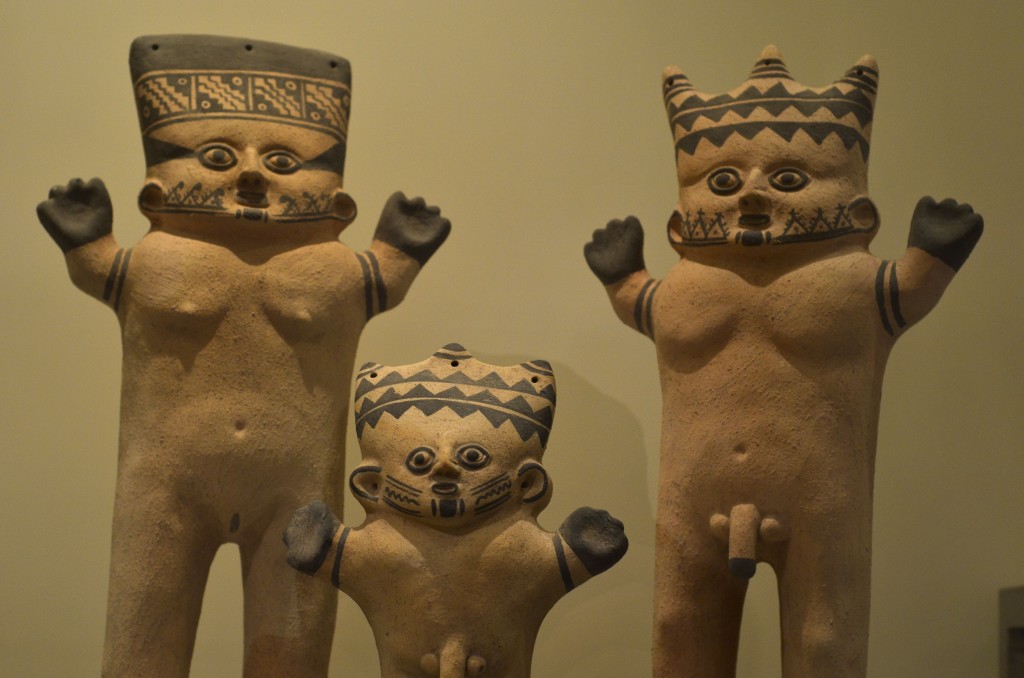
Afuera del museo unos ajíes duermen al sol otoñal coreano.
Uno de los hornos para la coció de los cántaros.
